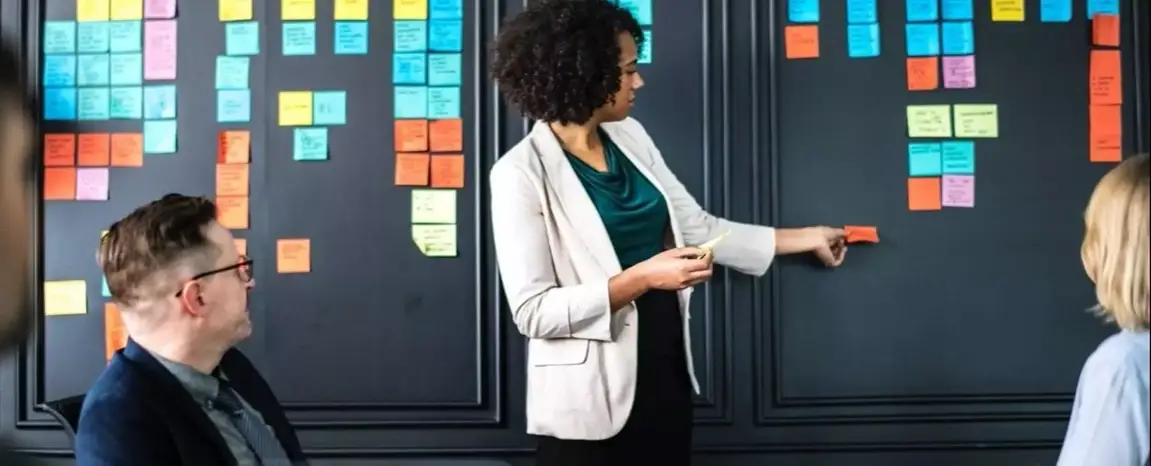
Organizations can benefit from “change agents”—people who rethink, redesign, and restructure the way things work from within. Whether they reimagine entire programs or introduce new systems and technologies, change agents cultivate bottom-up problem solving and informal leadership at their organizations.
This description of a change agent differs from many others that appear in change management discourse; it doesn’t assume that change is driven by people in formal, change management positions.
Often, a change agent is understood to be someone outside an organization (such as a hired consultant), or internal managers charged with initiating or executing a change process. Either way, the implication is that change is led by individuals designated with the official responsibility. It’s worth considering, however, that change can emerge from informal processes led by frontline staff who understand how organizational policies, procedures, and systems affect day-to-day operations.
Just think: you have the potential to be a change agent! The trick lies in believing your knowledge, skills, and abilities are relevant to diagnosing and addressing organizational challenges—and knowing how to take action. Read on for ideas that can help you to become a change agent and make a difference at your organization.
Be mindful of hierarchies and politics
While it’s important (and exciting) to consider that anyone can be a change agent, no individual operates outside of the social and political context of an organization. While change can start from the ground up, management support is essential.
This means that change agents without “formal power” need to focus on building lateral relationships and influencing colleagues. This allows consensus to emerge organically, which may facilitate uptake among decision makers.
Focus on consensus building and collaboration
One person can spark new ideas and propose creative solutions to organizational challenges. But implementing change requires broad-based support and engagement.
To build support, be transparent about your aims, open to new ideas, and flexible about the outcomes. These qualities, along with a collaborative approach from the start, support effective and authentic engagement.
You can also consider hosting think-tank sessions to map shared challenges and potential resolutions. In the process, you might discover any number of related issues that affect multiple individuals and functions throughout your organization—so never hesitate to adjust your original concept.
Accept resistance as a reality and respond flexibly
In the best-case scenario, you diagnose a problem, map a response, and quickly gain buy-in from your colleagues—but this doesn’t always happen. If you want a solution to take root, it’s important to check in with everyone affected before taking concrete action.
You might reach consensus with nine out of 10 people in a meeting, finding that one person is disengaged or wary. Speak directly with that person to understand their perspective. Absolute consensus isn’t always realistic, but it may be worth changing course if your ideas impact something that’s critically important to another person.
Look for existing solutions
Inventive solutions to common challenges may very well already exist somewhere in an organization. Positive deviants—people already using uncommon but effective strategies to solve a problem—are worth looking for.
Take time to understand different departments and how they work. Casually inquire about how people problem-solve and carry out day-to-day functions. If you work for a large organization, crowdsource ideas for tackling specific problems; it’s a great way to elevate voices that may otherwise remain unheard or excluded.
Take a holistic approach to problem solving
Challenges often stem from multiple contributing factors. It can be helpful to characterize a challenge within its broader context in order to see multiple possible intervention points.
When problem solving, try looking at how factors like ingrained beliefs, governing policies, and hierarchies interact and contribute to a problem. Also consider possible consequences of your proposed solution that lie beyond your immediate purview.
Focus on change that “outlives” you
Ideally, ideas for change—if accepted—should outlive any single individual’s time at an organization. The goal of being a change agent shouldn’t be to become personally indispensable to an initiative, but rather to focus on sustainable changes embedded in an organization.
Consider long-term sustainability early on as you brainstorm, crowdsource, and test ideas with colleagues. The costs, expertise, norms, policies, and communication required to initiate change may remain relevant to sustaining that change years later. Ask yourself how realistic it is to keep that change going without you as its champion and what future obstacles or opportunities may determine its lifespan.
Why be a change agent?
To stay relevant and scale up impact, social-impact organizations need to troubleshoot challenges and adapt how they operate. Whether this means a full-scale strategic reorientation or more discrete changes, bottom-up, staff-driven action is important. It’s worth reconsidering that only certain individuals have the right to drive change in organizations. On the contrary, change can be a grassroots social process sparked by a few individuals motivated to improve the mission-driven work they care for.
About the Author | Jen Bogle is a writer and social-impact communicator studying organizational psychology. She aims to help organizations enhance employee health and well-being.
***
Did you enjoy this post? Share your thoughts with us on Facebook.

